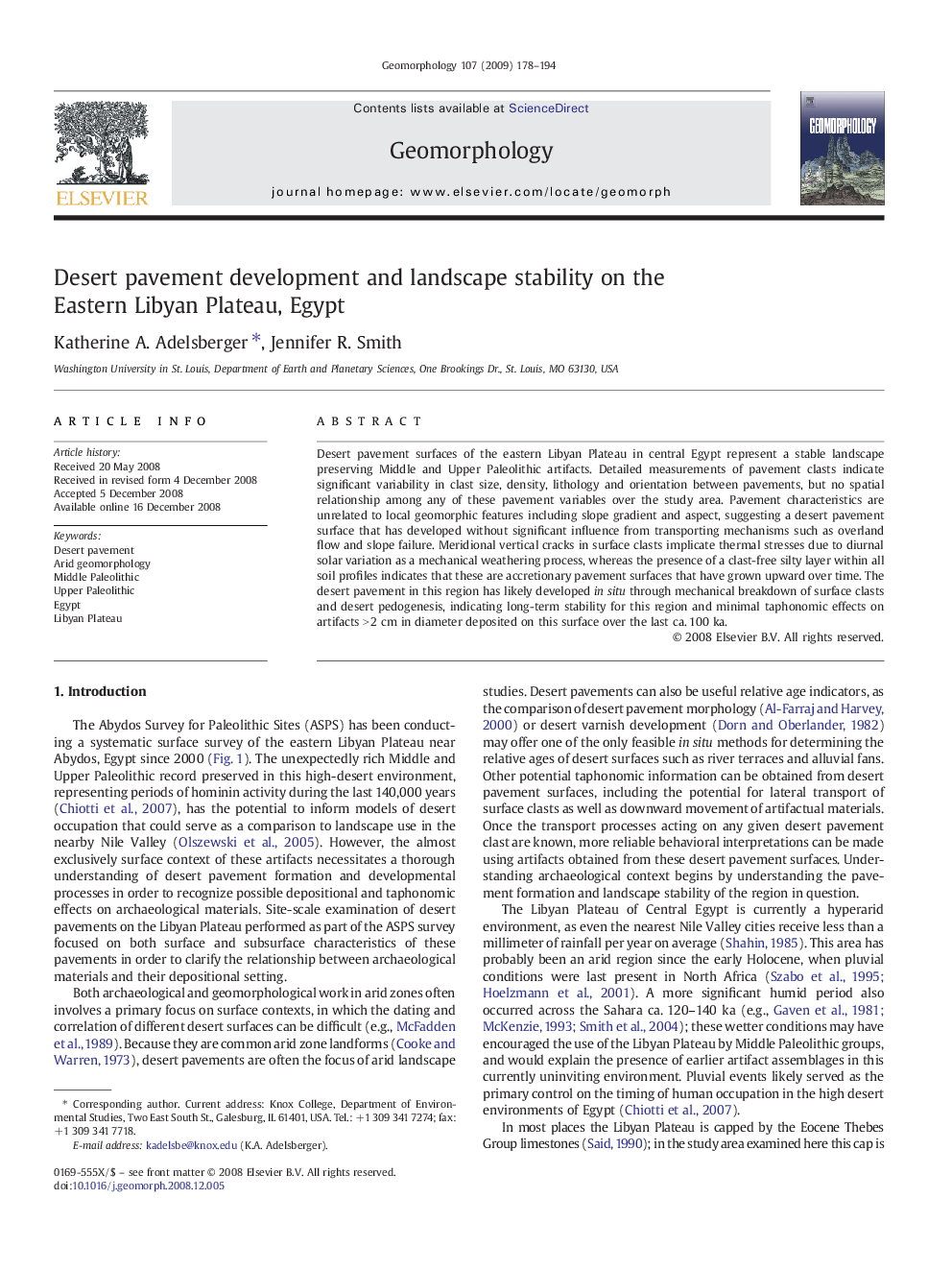| Article ID | Journal | Published Year | Pages | File Type |
|---|---|---|---|---|
| 4686398 | Geomorphology | 2009 | 17 Pages |
Desert pavement surfaces of the eastern Libyan Plateau in central Egypt represent a stable landscape preserving Middle and Upper Paleolithic artifacts. Detailed measurements of pavement clasts indicate significant variability in clast size, density, lithology and orientation between pavements, but no spatial relationship among any of these pavement variables over the study area. Pavement characteristics are unrelated to local geomorphic features including slope gradient and aspect, suggesting a desert pavement surface that has developed without significant influence from transporting mechanisms such as overland flow and slope failure. Meridional vertical cracks in surface clasts implicate thermal stresses due to diurnal solar variation as a mechanical weathering process, whereas the presence of a clast-free silty layer within all soil profiles indicates that these are accretionary pavement surfaces that have grown upward over time. The desert pavement in this region has likely developed in situ through mechanical breakdown of surface clasts and desert pedogenesis, indicating long-term stability for this region and minimal taphonomic effects on artifacts > 2 cm in diameter deposited on this surface over the last ca. 100 ka.
